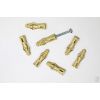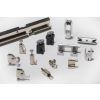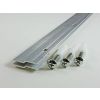Cables or Rods?
In a previous post, we discussed how to determine the proper track selection for weight limits involved in a picture hanging system.
This brings us to another important factor applicable and related to track selection: picture hanging cable or picture hanging rods. So how does one decide which hanging application is right for the job? Here are some factors that can help in the decision-making process.
Picture Hanging Cable is far more popular than the rod except in the case of more critical hanging system installations, such as in galleries, museums and commercial applications. Picture Hanging Cable is more discreet and offers a much smaller cross-section (less than 2.0 mm diameter), and cables may terminate behind the wall decoration so the end of the cable disappears. This is not the case with a rod-based system, and this single attribute greatly defines the discreetness of a particular installation.
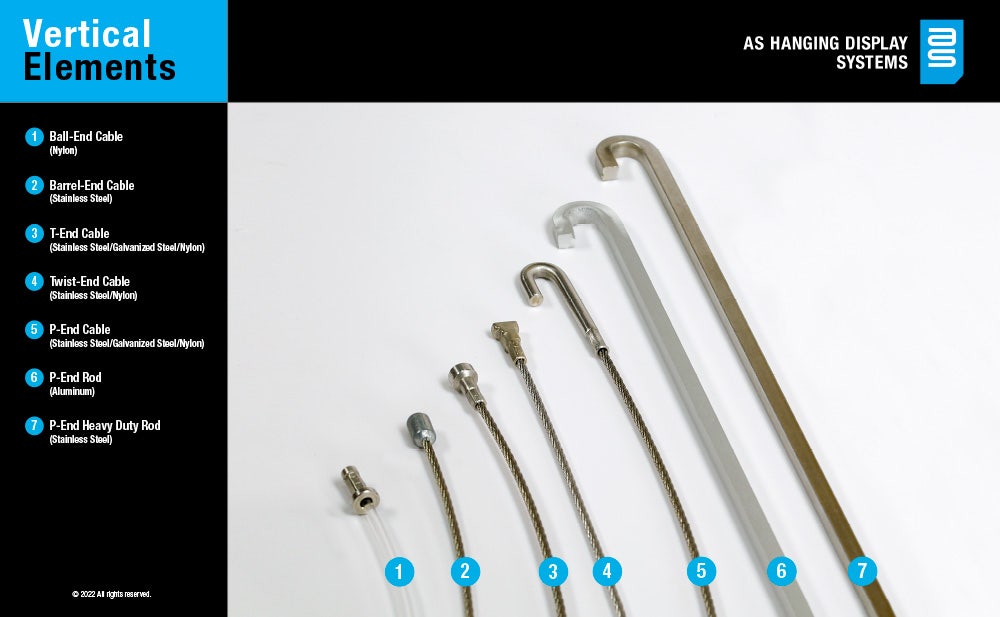

Picture Hanging Cable may also be deployed in a suspended (hanging from above) and tensioned (supported from above and tensioned to a lower point) manner. Our cables include stainless steel cables, or single filament nylon cords. These nylon cords may be available in uncolored transparent, and a variety of colored materials. With all these advantages for cable-based systems, when should picture hanging rods - also known as our Wall and Ceiling Classic Tracks - be specified over cables.
Picture Hanging Rods become a primary choice when one or more of the following reasons are applicable to your project:
1- Strength - While the typical steel cable will bear up to 45 lbs. in a hanging system application, an aluminum rod is rated for up to 70 lbs.
2- Anti-theft - Rods are offered in configurations that are anti-theft. Cables typically are less capable in this regard.
3- Dynamic displays - Because picture hanging rods are rigid, they are easy to maneuver. The user may add or remove them from the track by reaching any portion of the rod. To manipulate a cable, the user typically needs to nearly reach the track, which may require a stepladder. As a result, picture hanging rods are often preferred in applications where a display is frequently changing - it is a matter of convenience.
4- High-Mounted Track - Closely related to the last point, the last primary catalyst to specifying a rod-based system is in situations where the track is mounted higher than typical (10-13 feet from the adjacent floor). With a hanging cable system, the operator would certainly require a substantial ladder.
What are your application requirements? Does your project fit the criteria for installing a cable system or a rod-based system? Here is a convenient at-a-glance diagram to summarize.
Please contact our Customer Support at info@ashanging.com, or give us a call at 866 935-6949 (toll free).
When you hang with AS Hanging Display Systems, you Hang with the Best®
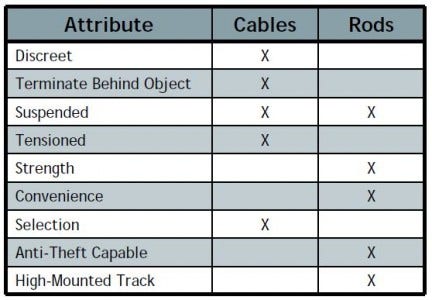

The AS Hanging advantages
Flexibility
Durability
Solidity
Preservation






